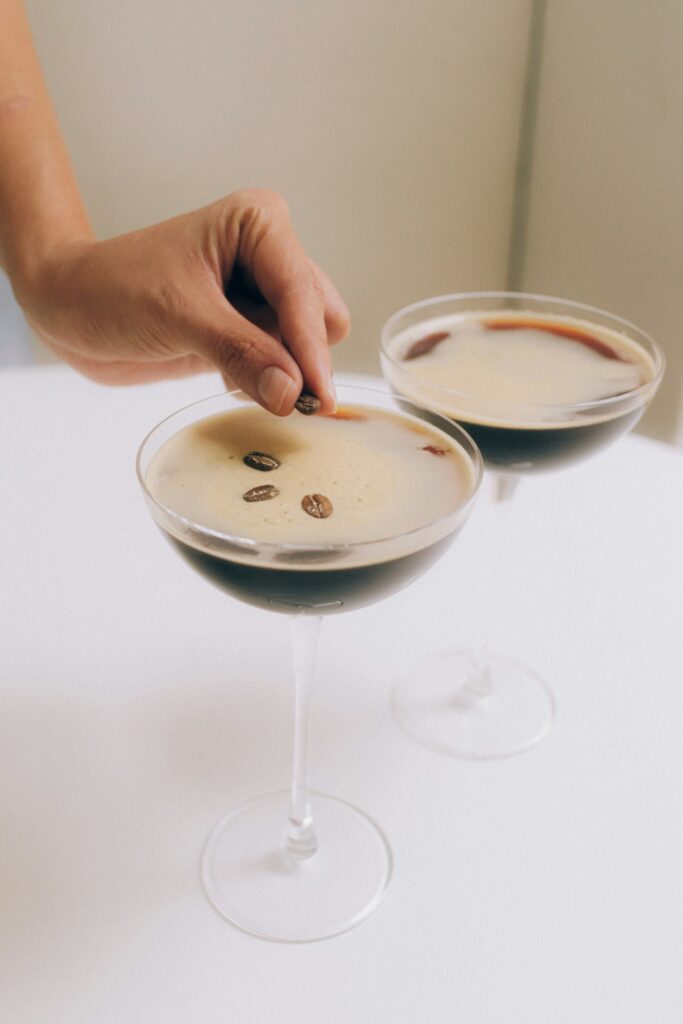There’s something deeply satisfying about making your own syrups. Perhaps it’s the alchemical transformation of sugar and water into something infinitely more interesting, or maybe it’s simply the pleasure of having a row of jewel-coloured bottles in your cupboard, ready to elevate everything from morning coffee to evening cocktails. Whatever the appeal, homemade syrups are remarkably simple to create, keep for ages, and make genuinely thoughtful gifts.
The basic principle is always the same: dissolve sugar in liquid, add flavouring, and bottle. But within that simple framework lies an extraordinary range of possibilities. Here are our favourite syrups to make at home.
Simple Syrup (With Variations)
Let’s start with the foundation: simple syrup. Despite its name, this is anything but basic in terms of usefulness. Equal parts sugar and water, heated until the sugar dissolves, then cooled. That’s it. But this blank canvas is where things get interesting.
The standard ratio is 1:1 by volume – say, 200ml water to 200g caster sugar – which gives you a syrup that’s ideal for cocktails and iced coffee. For a richer syrup that won’t dilute drinks quite as much, try a 2:1 sugar-to-water ratio instead.
Once you’ve mastered the basic recipe, the variations are endless. Add a few sprigs of fresh herbs (rosemary, thyme, and basil all work beautifully), strips of citrus peel, or whole spices like cardamom pods or star anise whilst the syrup is still warm. Leave to infuse for at least an hour before straining into a syrup bottle.
A vanilla simple syrup – made by splitting a vanilla pod and scraping the seeds into the sugar mixture – transforms even instant coffee into something rather special. But what else can you do with syrup?

Fruit Syrups
This is where homemade syrups truly come into their own. Shop-bought fruit syrups often taste artificial and cloying; homemade versions capture the genuine essence of whatever fruit you’re using. They’re brilliant for using up a glut of berries, turning slightly past-their-best stone fruit into something glorious, or preserving the flavour of seasonal produce.
The method is straightforward: combine equal weights of fruit and sugar with just enough water to prevent burning (usually about 100ml per 500g fruit). Simmer gently until the fruit breaks down completely – this usually takes about 20 minutes – then strain through a fine sieve or muslin, pressing gently to extract as much liquid as possible without forcing through any pulp.
Strawberry and raspberry syrups are classics for a reason, but don’t overlook less obvious options. Rhubarb makes a gorgeously tart syrup that’s spectacular in gin and tonics. Blackcurrant creates something intensely flavoured that’s perfect drizzled over vanilla ice cream. Even citrus works wonderfully – a blood orange syrup is a thing of beauty.
Ginger Syrup
If you’re only going to make one syrup from this list, make it ginger. It’s phenomenally versatile – equally at home in a Dark and Stormy as it is stirred into porridge or drizzled over yoghurt – and the homemade version has a fresh, zingy quality that bears no resemblance to the artificial ginger flavouring you find in commercial products.
Peel and thinly slice about 200g of fresh ginger (no need to be too precious about this; rough slices are fine), then simmer with 400ml water and 400g sugar for about 30 minutes until the ginger is tender and the syrup has thickened slightly. Strain, cool, and bottle. The leftover candied ginger pieces, incidentally, are delicious – either eaten as they are or dipped in dark chocolate.
For extra complexity, add a stick of cinnamon or a few cardamom pods whilst simmering. A squeeze of fresh lemon juice at the end brightens the whole thing beautifully.


Salted Caramel Syrup
Technically more of a sauce than a syrup, but we’re including it because it’s absolutely worth making and the principle is similar enough. Unlike other syrups on this list, caramel requires a bit more attention and confidence, but the results are genuinely spectacular.
You’ll need 175g light soft brown sugar, 50g salted butter (cut into cubes), 300ml double cream, and a good pinch of sea salt flakes. Heat the sugar in a heavy-bottomed pan over medium heat, stirring constantly until it melts and turns a deep amber colour. Remove from heat and carefully add the butter (it will bubble dramatically), stirring until incorporated. Pour in the cream, still stirring, then add the salt.
Return to a low heat and stir for another minute or two until completely smooth. This keeps in the fridge for weeks, though it rarely lasts that long. It’s transformative on ice cream, pancakes, or stirred into coffee.
Elderflower Cordial
Yes, we know – cordial versus syrup, what’s the difference? Honestly, the definitions are murky at best. Cordials are traditionally diluted before drinking whilst syrups are used neat, but the preparation method is identical and you can use this undiluted just like any other syrup. We’re including it because it’s too good to leave out over a technicality.
The brief window when elderflowers are in bloom – usually late May and early June – is one of the kitchen calendar’s most anticipated moments. Making elderflower cordial captures that fleeting season in a bottle, and the process couldn’t be simpler.
You’ll need about 25 elderflower heads, picked on a dry day when they’re fully open and smelling their most fragrant. Give them a gentle shake to remove any insects, but don’t wash them – you’ll lose much of the pollen that carries the flavour. Place them in a large bowl with the zest of 2 lemons and 2 oranges, plus their juice.
Dissolve 1.5kg sugar in 1.5 litres of boiling water, pour over the flowers and citrus, and add 75g citric acid. Cover and leave to infuse for 24 hours, giving it an occasional stir. Strain through muslin, bottle, and keep in the fridge. Violet glass bottles are particularly good for elderflower cordial as they protect the delicate flavours from light degradation. Diluted with cold sparkling water, this is British summer in a glass. Diluted with cold sparkling water, this is British summer in a glass.
Coffee Syrup
For those who prefer their morning coffee iced, or who want to elevate desserts with genuine coffee flavour rather than powdery instant granules, coffee syrup is invaluable. Unlike coffee itself, which loses its freshness within hours, coffee syrup keeps for weeks and maintains its deep, complex flavour.
Make a strong batch of coffee using your preferred method – about 500ml should do it. Whilst still hot, stir in 400g sugar until completely dissolved. For added richness, a splash of vanilla extract works wonderfully here. Allow to cool completely before bottling.
This is brilliant for making quick iced coffees (just add milk and ice), flavouring buttercream, or even drizzled over vanilla ice cream for an affogato-style dessert without the bother of making fresh espresso. It’s great over pancakes and in an espresso martini too.


Tomato & Basil Syrup
Stay with us here. A tomato syrup sounds bizarre until you remember that tomatoes are technically fruit, and that the combination of their natural umami sweetness with sugar creates something genuinely extraordinary.
This is brilliant drizzled over burrata or fresh mozzarella, whisked into salad dressings, or used as an unexpected cocktail ingredient – it makes a Bloody Mary that’s simultaneously familiar and completely revelatory.
Start with about 500g ripe tomatoes (the sweeter and more flavourful, the better – this is the time to use those end-of-summer specimens). Roughly chop them and simmer with 300g sugar and 100ml water for about 30 minutes until completely broken down. Add a large bunch of fresh basil and remove from heat, leaving it to infuse for at least an hour.
Strain through muslin or a fine sieve, pressing gently to extract maximum liquid without forcing through any pulp or seeds. The result should be a clear, coral-coloured syrup with an intense tomato-basil flavour that’s both sweet and savoury. A splash of good balsamic vinegar at the end adds complexity and balances the sweetness beautifully.
Chilli & Lime Syrup
Because not all syrups need to be sweet. Well, this one is sweet, but it’s got a fiery kick that makes it surprisingly versatile. It’s spectacular in margaritas, brilliant brushed over grilled chicken or fish, and even works drizzled over mango or pineapple.
Combine 400ml water, 400g sugar, the zest and juice of 4 limes, and 2-3 red chillies (sliced lengthways, seeds and all if you’re brave) in a pan. Simmer until the sugar dissolves, then remove from heat and leave to infuse for at least an hour. The longer you leave it, the more heat will develop, so taste as you go and strain when it reaches your preferred level of fieriness.
This keeps for months in the fridge and adds instant interest to countless dishes. Try it in a gin and tonic for a drink that’s simultaneously refreshing and warming, or use it to make a quick sweet chilli dipping sauce by mixing with a little rice vinegar and fish sauce.
And another fine way to use up a glut of chillies, don’t you think?
Storage & Safe Keeping
All of these syrups will keep for at least a month in the fridge, often considerably longer – the high sugar content acts as a natural preservative. Always use sterilised bottles (run them through a hot dishwasher cycle, or wash thoroughly and dry in a low oven), and make sure your syrups are completely cool before bottling.
If you notice any cloudiness, off smells, or mould developing, discard and make a fresh batch. But stored properly, these syrups are remarkably stable. In fact, many actually improve after a week or so as the flavours meld and develop.
The Bottom Line
The beauty of making your own syrups is that once you understand the basic principle, you can experiment endlessly. Lavender, rose, cucumber, even tomato – if you can imagine it, you can probably make a syrup from it. And unlike so many kitchen projects that seem like a good idea but quickly become a chore, syrup-making remains genuinely useful. These aren’t bottles that will languish at the back of the cupboard; they’re everyday ingredients that will transform the ordinary into something rather special.





